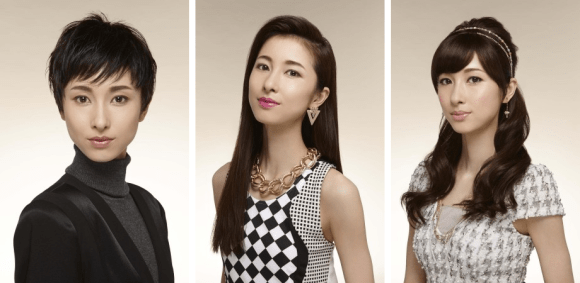
Shiseido tracks Japanese makeup movements through the decades.
As Japan’s premiere cosmetics manufacturer, Shiseido keeps its finger on the pulse of the Japanese fashion scene. But while the company has thrived by staying constantly contemporary, it was actually founded all the way back in 1872.
In its nearly 150 years of operation, Shiseido has had a front-row seat as makeup trends come and go in Japan, and the company recently took a moment to look back on many of them. Setsuko Suzuki, Shiseido’s senior hair and makeup artist, pegs the 1920s as when Western-style cosmetics achieved widespread use in Japan.
At first, the most popular looks blended Western and traditional Japanese aesthetics. This meant fine eyebrows with a pronounced downward drop and heavy eyeshadow at the bottom corners of the eye to produce a droopy, sleepy look, as well as lipstick applied to create a small, puckered mouth.
▼ 1920s
In the 1930s, more overseas beauty concepts started to be incorporated, with greater eyebrow curves and bolder lipstick, which were in vogue with screen actresses at the time.
▼ 1930s
Suzuki next checks in with makeup trends following World War II, with determined, squared eyebrows becoming popular as Japan buckled down to rebuild the country in the 1950s.
▼ 1950s
Things became much more colorful in the 1960s, when Japanese women began to break with tradition and showed an increasing fondness for shades other than the indigenous Japanese cosmetic standards of white, black, and red. Pale lipstick took off along with eye makeup simulating double-folded eyelids and false eyelashes as Japanese women longed to emulate the look of Western fashion models, as opposed to actresses. Suntanned skin also became popular for the first time in Japan’s history, after centuries of being considered a mark of an unpleasant, labor-intensive lifestyle.
▼ 1960s
The social unrest of the 1970s, including the Vietnam War, environmental crises, and economic malaise was reflected in dark eye shadow and sharply thin eyebrows.
▼ Early 1970s
In the late 1970s, Japan began to reevaluate its indigenous beauty, partially reversing decades spent chasing Western fashion.
▼ Late 1970s
This confidence carried over into the Bubble Economy of the early 1980s, when the trend of thinning eyebrows was finally curbed.
▼ Early 1980s
As the economic high times continued to roll, even career-oriented women began craving a more feminine look, and while eye makeup became more natural in coloring, lipsticks became brighter.
▼ Late 1980s-early 1990s
The late 1990s saw an unprecedented fragmentation of Japanese fashion, with the population splintering off into groups such as flashy gyaru, elegant white-collar professionals, or mixtures of hip-hop and Japanese street style. One overarchingly popular trend, though, was brown-dyed hair.
▼ Late 1990s-early 2000s
Starting from the mid-2000s, an increasing number of women started turning to non-cosmetic beauty enhancers, such as hair extensions, eyelash perms, and contact lenses meant to make the pupils appear larger.
▼ Late 2000s
However, Shiseido says that the March 11 earthquake and tsunami of 2011 caused many women to ask themselves what is truly important in life, which resulted in a shift away from a heavily made up look and towards a relaxed, comforting appearance. In particular, baggy eyes (called namidabukuro, or “tear bags” in Japanese) and blushed (yuagari nobose, or “dizzy from a hot bath”) cheeks became popular, creating a comforting, cathartic aura.
▼ Post-2011 earthquake and tsunami
And finally, the most recent makeup trends borrow heavily from the 1980s, especially in a preference for bright red lipstick.
▼ Today
Just more proof that nothing ever permanently goes out of style.
Source: Shiseido
Top image: Shiseido (edited by SoraNews24)
Insert images: Shiseido